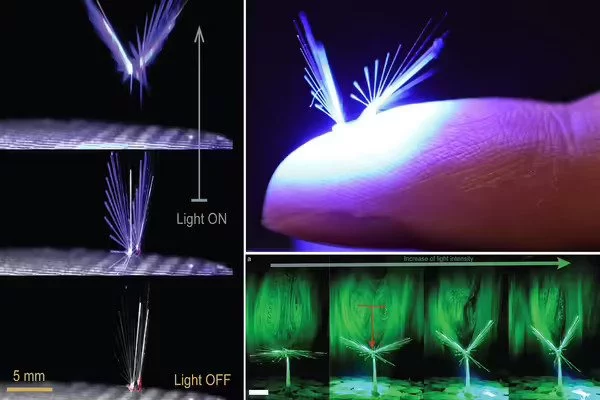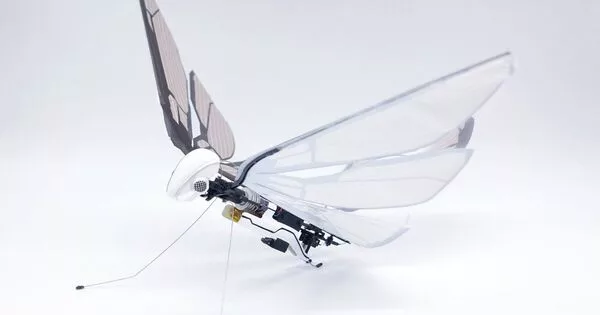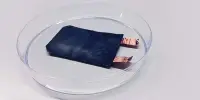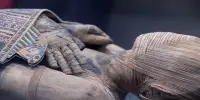The concept of a fairy-like robot powered by wind and light is an intriguing one and could be a fascinating design for a work of fiction or art. In such a creation, the robot could use the power of wind to stay afloat and fly through the air, while the light could serve as a source of energy or illumination. This combination of elements could create a unique and visually stunning design, as well as offer opportunities for interesting storytelling and character development.
Pollinator extinction, such as that of bees, poses a significant challenge to global biodiversity and has an impact on humanity by causing food production issues. Researchers have created the world’s first passively flying robot with artificial muscle. Could this fake fairy be used for pollination?
The creation of stimuli-responsive polymers has resulted in a plethora of material-related opportunities for next-generation small-scale, wirelessly controlled soft-bodied robots. Engineers have known for some time how to use these materials to create small robots that can walk, swim, and jump. So far, no one has succeeded in making them fly.
Researchers of the Light Robots group at Tampere University are now researching how to make smart material fly. Hao Zeng, Academy Research Fellow and the group leader, and Jianfeng Yang, a doctoral researcher, have come up with a new design for their project called FAIRY — Flying Aero-robots based on Light Responsive Materials Assembly. They have developed a polymer-assembly robot that flies by wind and is controlled by light.
The fairy can be powered and controlled by a light source, such as a laser beam or LED. This means that light can be used to change the shape of the tiny dandelion seed-like structure. The fairy can manually adapt to wind direction and force by changing its shape.
Hao Zeng
“Superior to its natural counterparts, this artificial seed is equipped with a soft actuator. The actuator is made of light-responsive liquid crystalline elastomer, which induces opening or closing actions of the bristles upon visible light excitation,” explains Hao Zeng.
The artificial fairy is controlled by light
Zeng and Yang’s biomimetic artificial fairy has several biomimetic features. Because of its high porosity (0.95) and lightweight (1.2 mg) structure, it can easily float in wind-directed air. Furthermore, the generation of a stable separated vortex ring enables long-distance wind-assisted travel.
“The fairy can be powered and controlled by a light source, such as a laser beam or LED,” Zeng says. This means that light can be used to change the shape of the tiny dandelion seed-like structure. The fairy can manually adapt to wind direction and force by changing its shape. A light beam can also be used to control the polymer assembly’s takeoff and landing actions.

Potential application opportunities in agriculture
Next, the researchers will focus on improving the material sensitivity to enable the operation of the device in sunlight. In addition, they will up-scale the structure so that it can carry micro-electronic devices such as GPS and sensors as well as biochemical compounds.
According to Zeng, there is potential for even more significant applications.
“It may sound like science fiction, but the proof-of-concept experiments included in our research show that the robot we developed is an important step toward realistic applications suitable for artificial pollination,” he explains.
Millions of artificial dandelion seeds carrying pollen could be dispersed freely by natural winds in the future, and then guided by light to specific areas with trees awaiting pollination. “This would have a huge impact on agriculture globally because pollinator loss due to global warming has become a serious threat to biodiversity and food production,” Zeng says.
Challenges remain to be solved
However, many problems need to be solved first. For example, how to control the landing spot in a precise way, and how to reuse the devices and make them biodegradable? These issues require close collaboration with materials scientists and people working on microrobotics.
A fairy-like robot powered by wind and light would be an interesting blend of technology and magic. It’s intriguing to think about how such a robot might look and move, as well as what its purpose might be. Perhaps it could be used for environmental monitoring or to deliver messages between people in remote areas.
















